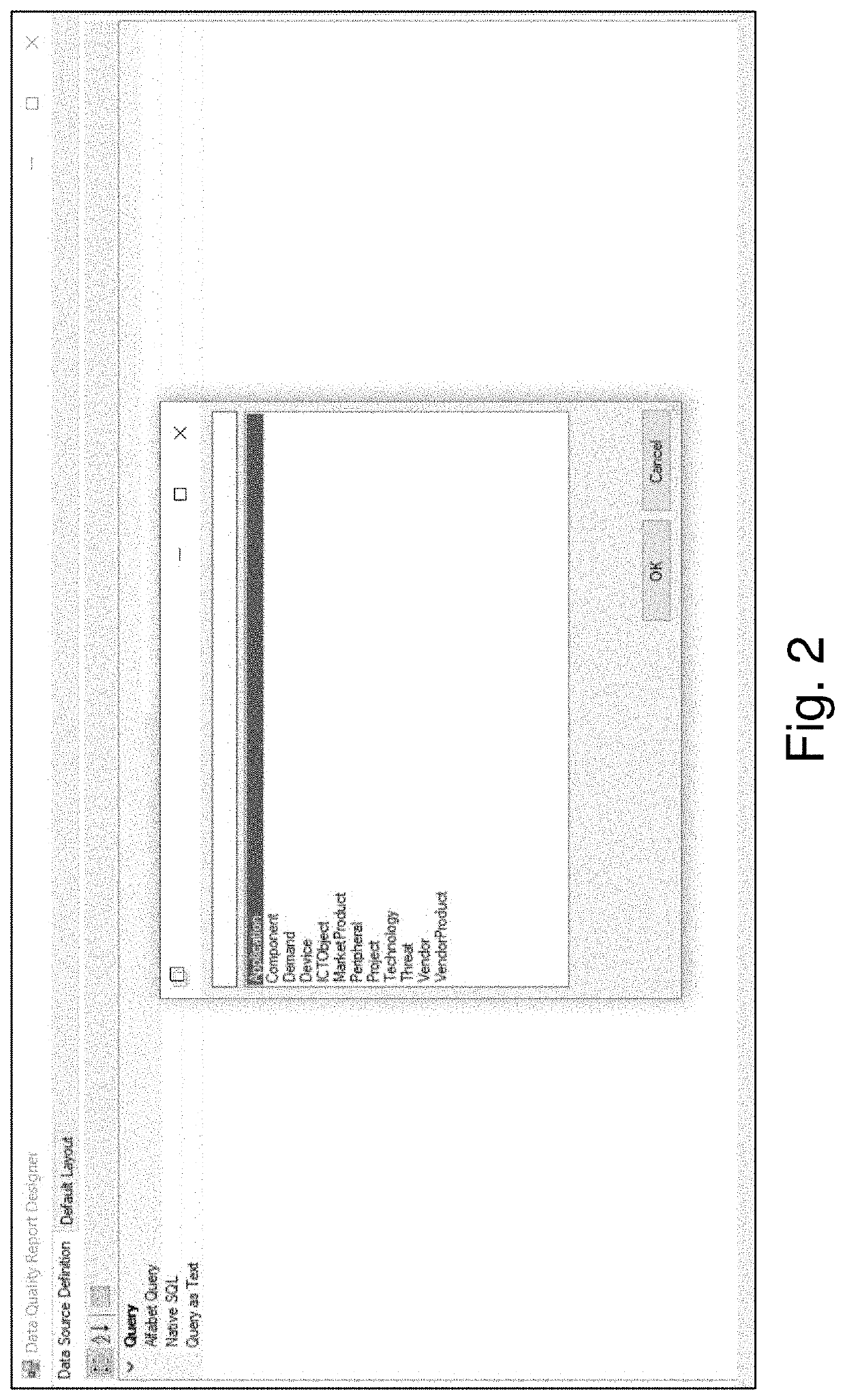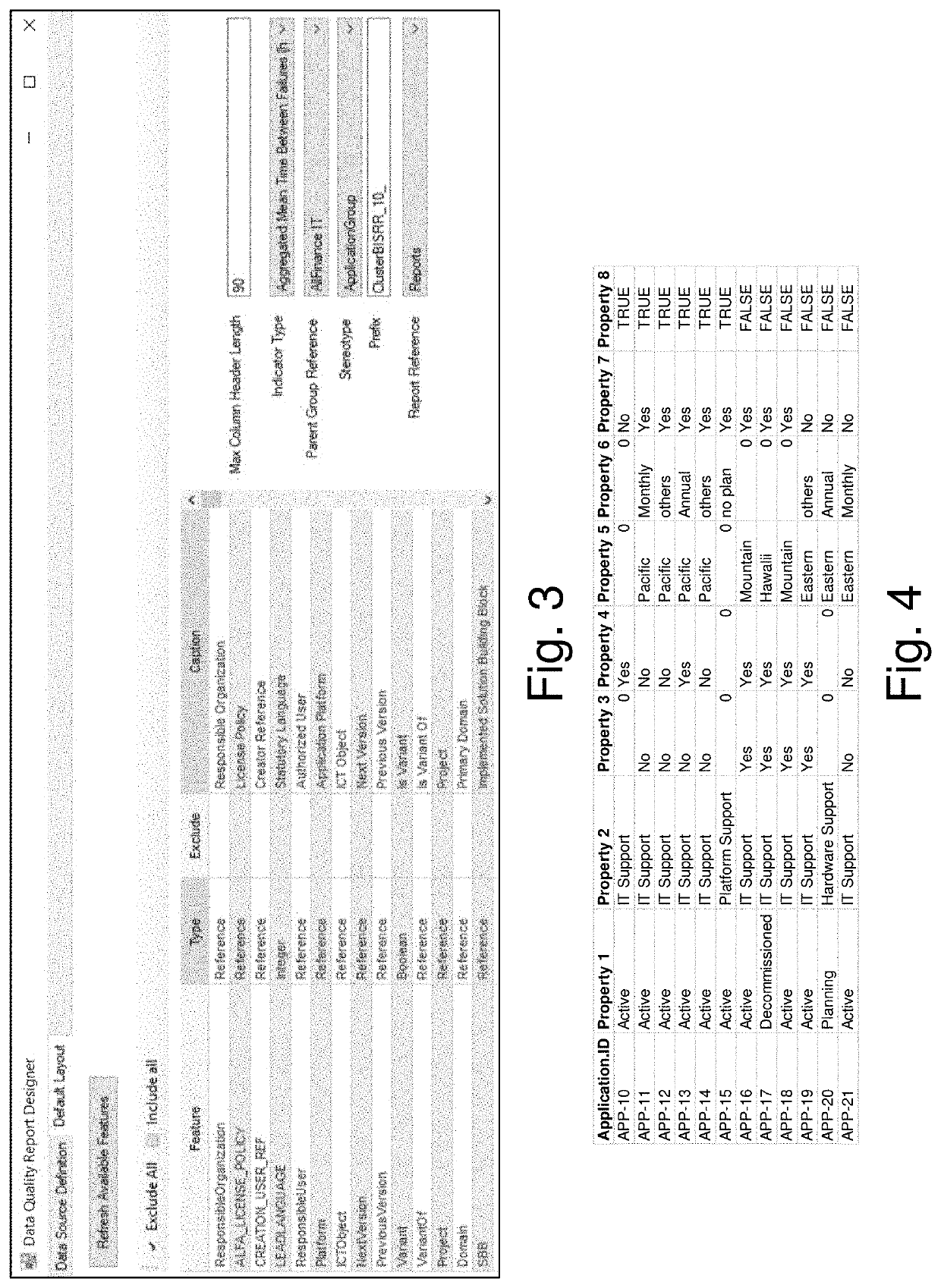Systems and/or methods for machine-learning based data correction and completion in sparse datasets
a technology of machine learning and data correction, applied in relational databases, instruments, computing models, etc., can solve problems such as data quality challenges, data about enterprise architecture, and enterprise strategic plans or operations tend to be sparse in nature, and achieve high confiden
- Summary
- Abstract
- Description
- Claims
- Application Information
AI Technical Summary
Benefits of technology
Problems solved by technology
Method used
Image
Examples
example implementation
[0063]Details concerning an example implementation are provided below. It will be appreciated that this example implementation is provided to help demonstrate concepts of certain example embodiments, and aspects thereof are non-limiting in nature unless specifically claimed. For instance, certain example clustering algorithms, distance measures, module configurations, etc., are provided below to ease understanding of the example embodiments described herein and are not limiting unless explicitly claimed. In certain example embodiments, software modules corresponding to the functionality disclosed in FIG. 1 can be implemented using ML.NET. ML.NET is a cross-platform open-source machine learning framework which makes machine learning accessible to .NET developers. It will be appreciated that other programming languages, paradigms, and / or the like, may be used in different example embodiments.
[0064]As alluded to in the previous paragraph, the end-to-end arrangement of FIG. 1 may be ena...
PUM
 Login to View More
Login to View More Abstract
Description
Claims
Application Information
 Login to View More
Login to View More - R&D
- Intellectual Property
- Life Sciences
- Materials
- Tech Scout
- Unparalleled Data Quality
- Higher Quality Content
- 60% Fewer Hallucinations
Browse by: Latest US Patents, China's latest patents, Technical Efficacy Thesaurus, Application Domain, Technology Topic, Popular Technical Reports.
© 2025 PatSnap. All rights reserved.Legal|Privacy policy|Modern Slavery Act Transparency Statement|Sitemap|About US| Contact US: help@patsnap.com



